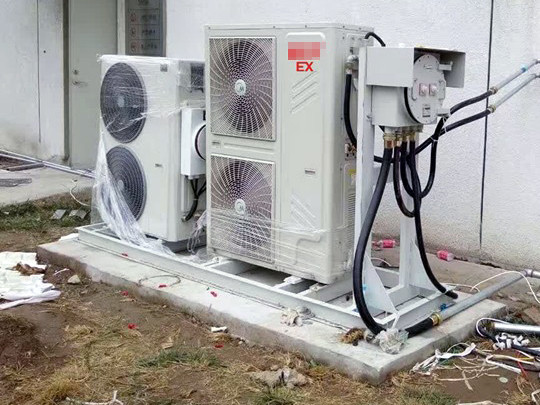A o faagasolo le vaitau, ea malulu ua suia mai le masani i le pa-fa'ata'ita'iga fa'ata'ita'iga, ma ua fa'apea fo'i ona fa'atuputeleina le fa'asologa o nei iunite fa'apitoa. Ae fa'afefea ona tulaga ese le ea inverter pe a fa'atusatusa i a latou pa'aga masani? Lalo, matou te su'esu'e i le tele o auala fa'alelei fa'alelei o fa'alili ea fa'ato'a pa, lea e mautinoa ai le saogalemu ma sili atu ona lelei le faʻaogaina i le faʻaaogaina i aso uma.

1. Puipuiga o le vevela mo Su'ega vevela i totonu:
A'o fa'agaoioi ile fa'avevela faiga, fa'agesegese le saosaoa ili po'o filiga poloka e mafai ona fa'alavelaveina le fa'amama'ese o le vevela mai le vili totonu, mafua ai le fa'afefe o le fa'afefe vevela e tulai. O lenei fa'aaliga e le gata e fa'aitiitia ai le fa'avevela ae e mafai fo'i ona o'o atu ai i le fa'avevelaina o masini. O lea, fa'alili fa'aalili fa'aoso fa'aoso fa'aoso fa'aliliu fa'ato'a fa'aoso fa'atasi ai ma le puipuiga o le vevela tele mo fa'afesuia'i vevela i totonu. E fa'atapula'aina e le faiga le fa'atuputeleina o le fa'aoso o le compressor pe a sili atu le vevela o le potu i le 53°C; e fa'aitiitia ai le tele o le compressor ma fa'agaoioia le afi ili i fafo i le saoasaoa maualalo pe a sili atu i le 56°C; ma e taofi ai le compressor ma fa'agaoioia le so'ona vevela po'o le mamafa o le puipuiga pe a sili atu le vevela i le 65°C. E mata'ituina ma fa'ailoa atu nei fa'ailoga mata'utia o le vevela e ala i fa'aaliga fa'aaliga, moli fa'ailoga, ma piele.
1. Compressor Puipuiga ova:
Ina ia puipuia mai le soona faagaioia o au e ono faaleagaina ai le vili afi a le compressor, ua fa'apipi'iina ea fa'a'a'alili fa'ato'a pa'u fa'ato'a fa'atasi ma puipuiga malosi i luga o le tafe. I le taimi o le malulu, pe a o'o i le 9.6A le compressor, ole microprocessor ole faiga e fa'aosoina ai se fa'ailo fa'atonutonu e taofia ai le fa'ateleina o taimi; ma le 11.5A, e fa'ailo mai e fa'aitiitia taimi; ma i le 13.6A, e fa'agaoioia se fa'ailo puipuia e fa'agata ai le fa'agaioiga o le compressor. E fa'aoga faiga fa'apena i le taimi o le fa'avevela, fa'atasi ai ma tulaga fa'apitoa o lo'o iai nei fa'atulaga ile 13.5A, 15.4A, ma le 18A, taitasi. O nei la'asaga taua ta'itasi e fa'ailoa iloga i le tagata fa'aoga e ala i fa'aaliga fa'aaliga, moli fa'ailoga, ma piele mo le fa'alauteleina o le silafia ma le saogalemu.
 Shenhai Pasi-Faamaoniga
Shenhai Pasi-Faamaoniga
